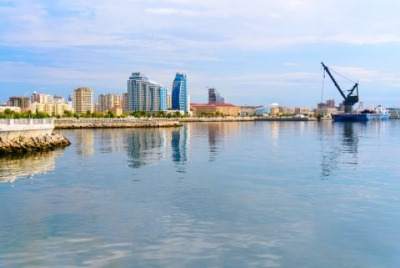
The Caspian Sea, in Europe and Asia, can be called either a lake or a sea. It is the world’s largest inland waterbody with an area covering 370,000 sq km. It is surrounded by Azerbaijan, Iran, Kazakhstan, Turkmenistan and Russia. It has long been regarded as a sea because of its size and saline water. But it has the characteristics of a lake – it is fully enclosed by land.
The Caspian is the largest salt lake in the world, but that has not always been true. Scientific studies have shown that until relatively recent geologic times, approximately 11 million years ago, it was linked, via the Sea of Azov, the Black Sea, and the Mediterranean Sea, to the world ocean. The Caspian is of exceptional scientific interest, because its history—particularly former fluctuations in both area and depth—offers clues to the complex geologic and climatic evolution of the region. Human-made changes, notably those resulting from the construction of dams, reservoirs, and canals on the immense Volga River system (which drains into the Caspian from the north), have affected the contemporary hydrologic balance. Caspian shipping and fisheries play an important role in the region’s economy, as does the production of petroleum and natural gas in the Caspian basin. The sea’s splendid sandy beaches also serve as health and recreation resorts.
The Caspian basin, as a whole, is usually divided into the northern, middle, and southern Caspian, based partly on underwater relief and partly on hydrologic characteristics. The sea contains as many as 50 islands, most of them small. The largest are Chechen, Tyuleny, Morskoy, Kulaly, Zhiloy, and Ogurchin.
Credit : Britannica
Pictur Credit : Google




